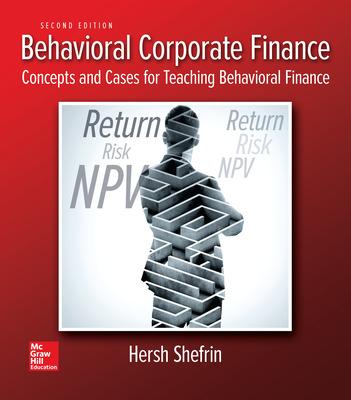1. Identify the psychological phenomena in the minicase. Prioritize the phenomena from most important to least important....
Question:
1. Identify the psychological phenomena in the minicase. Prioritize the phenomena from most important to least important. Begin your answer by defining the phenomena, and then describing their role in the minicase. As part of your answer, discuss the implications of avoiding probabilistic safety assessments when planning the design of a nuclear reactor such as Fukushima Daiichi.
2. As of July 2015, 30 countries worldwide are operating 438 nuclear reactors for electricity generation and 67 new nuclear plants are under construction in 15 countries. Nuclear power plants provided 10.9 percent of the world’s electricity production in 2012. In 2014, 13 countries relied on nuclear energy to supply at least one-quarter of their total electricity. As of 2015, there have been three major reactor accidents in the history of civil nuclear power—Three Mile Island, Chernobyl, and Fukushima Daiichi. One was contained without harm to anyone, the next involved an intense fire without provision for containment, and the third severely tested the containment, allowing some release of radioactivity.
These are the only major accidents to have occurred in over 15,000 cumulative reactor-years of commercial nuclear power operation in 33 countries. Given a standard of 1 in 10,000 years, use the binomial distribution to compute the probability that there will be three or more “core meltdowns” in 15,000 cumulative reactor-years.21 How does your answer change when the standard is 1 in 10 million?
On March 11, 2011, an earthquake of magnitude 9 on the Richter scale occurred off the northeast coast of Japan. This was the largest ever recorded in the country, and it generated a powerful tsunami that caused major damage in Japan. Tsunami waves reached 128 feet (39 meters) and penetrated inland for as much as 6 miles (10 kilometers). According to the country’s National Police Agency, the number of deaths exceeded 15,000 with at least 2,500 people unaccounted for. The Japanese government estimated total damages from the disaster to be in the vicinity of $300 billion.15 This event had ongoing long-term consequences. Japan shut down all of its nuclear reactors until 2015, switching to more expensive alternatives such as oil.16 Included in the damage was the destruction of the Fukushima Daiichi power plant, which experienced the meltdown of some of its nuclear fuel rods.
Earthquakes and tsunamis are well recognized risks in Japan, and the 2011 combination of earthquake and tsunami was a case of very bad luck. According to the World Nuclear Association, the reactors proved to have been robust seismically, but vulnerable to the ensuing tsunami.17 In response to the earthquake, Fukushima Daiichi’s operating reactors shut down automatically, as planned, with backup generators being used to supply power in order to keep the reactor cores from overheating. However, when the tsunami arrived an hour after the earthquake struck, it swamped the backup generators and the emergency core cooling systems subsequently failed. Consider how risks associated with earthquakes and tsunamis were assessed, both in the planning stage for building the Fukushima Daiichi plant and in the subsequent period when it was in operation.
In this regard, the plant was commissioned in 1971 and operated by the Tokyo Electric Power Company (TEPCO), was built by General Electric, and was regulated by Japan’s Nuclear and Industrial Safety Agency (NISA). During the time that the Fukushima Daiichi plant wasbuilt, the standard was to plan for a major seismic event that was expected to occur only once in 10,000 years. The International Atomic Energy Agency (IAEA) stipulates that best practice for assessing the risks of earthquakes and tsunamis should include the feasible collection of data on prehistoric and historic earthquakes and tsunamis in the region of a nuclear power plant. Originally, TEPCO and NISA agreed on a plant design in which the seawater intake buildings were located 12 feet (4 meters) above sea level and the main plant buildings were located at the top of a slope that was 30 feet (10 meters) above sea level. The basis for these decisions was an earthquake that occurred in 1960 off the coast of Chile, which generated a tsunami having a height of 10 feet (3.1 meters). Japan experiences approximately 1,500 earthquakes every year, with minor tremors occurring on a near-daily basis and major destructive seismic events well documented. More than 20 quakes occurred in the twentieth century of magnitude ...
DistributionThe word "distribution" has several meanings in the financial world, most of them pertaining to the payment of assets from a fund, account, or individual security to an investor or beneficiary. Retirement account distributions are among the most...
Step by Step Answer:

Behavioral Corporate Finance Concepts And Cases For Teaching Behavioral Finance
ISBN: 9781259277207
2nd Edition
Authors: Hersh Shefrin





